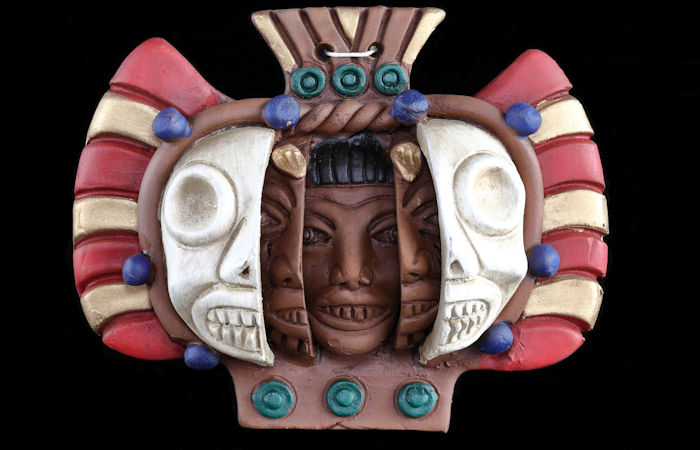Supay: God Of Death And Underworld And Ruler Over Race Of Demons According To Inca Beliefs
A. Sutherland - AncientPages.com - In the Inca and Aymara mythologies, Supay ('Andean Devil') was both the god of death and powerful ruler of the Incan underworld Ukhu Pacha (Uku Pacha), as well as a race of demons.
Unlike Europeans, the indigenous people did not reject Supay. They were so afraid of him that they invoked him and begged him not to harm them. Credit: Adobe Stock - JIT
Supay was responsible for balancing good and evil.
Supay is listed as one of the most wicked gods. He was the one who protected the path of the dead. The Incas believed that death was a new beginning with the Inca gods. Despite this pessimistic view, many Inca people worshiped him because they believed in his power to grant them favors through offerings and rituals.
He was depicted as a figure resembling demons (jaguar head, longhorns, wise eyes, puma body, and sharp teeth). Supay was a shapeshifter that could surprise by taking the form of an Inca woman or a handsome Inca man; in the same way, he could transform into any animal he wanted.
The domain of Supay was located in the deep earth, and his underworld is also known as the "inner world" or "below the world." Therefore, as the god of minerals, Supay was worshipped by miners. Today, his worship is still alive among Andean miners and excavators.
According to Inca mythology, the god Supay's underground realm was Ukhu Pacha (Uku Pacha), one of three realms (or 'Pacha') that divides the cosmos.
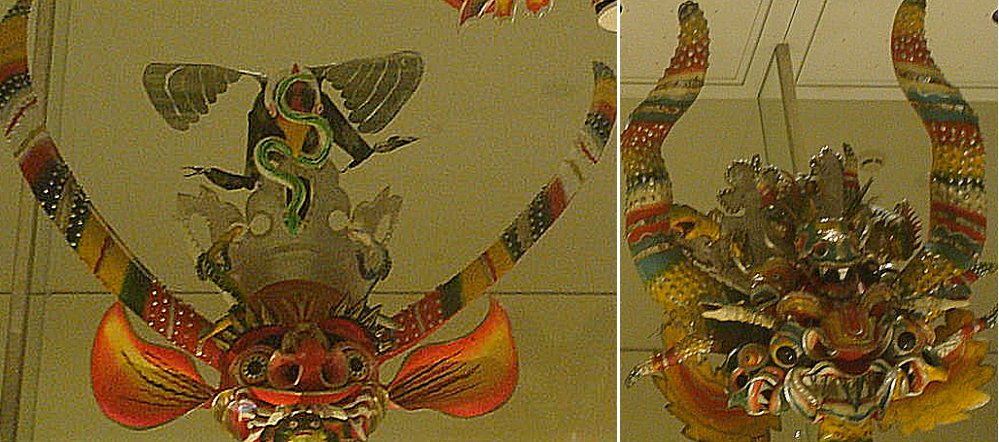 Left: 18th-century painting of the Danza de Los diablos de Túcume, region of Túcume, Peru. source Right: Different models of Diablada masks in an exhibition in the British Museum. source
Left: 18th-century painting of the Danza de Los diablos de Túcume, region of Túcume, Peru. source Right: Different models of Diablada masks in an exhibition in the British Museum. source
Two other realms are Hanan Pacha and Kay Pacha, which along with Ukhu Pacha, resemble Catholic beliefs in the earth, heaven, and hell, a concept also known in other religions.
Chronicler and writer Garcilaso de la Vega (1539 – 1616) was a son of a Spanish conquistador and an Inca noblewoman born in the early years of the conquest. He was widely recognized for his histories of Inca history, culture, and society. The chronicler Vega characterized Supay's Uku Pacha as an underworld, a place of pain and suffering.
The wicked were sent to the 'lowest earth, the so-called 'house of the devil.'
However, the Uku Pacha underworld was not considered a negative concept. Incas regarded the place's subterranean water as life-sustaining springs, which link the human realm with the inner world.
In his 'Handbook of Inca Mythology,' Paul Steele says that Uku Pacha was linked to 'the feminine earth mother and the bones of the ancestors.'
When the Spaniards colonized the Americas, Christian priests called the Christian Devil 'Supay.' Unlike Europeans, the indigenous people accepted Supay. They were so afraid of him that they invoked him and begged him not to harm them.
Today, the ancient symbolism of this terrifying mythological figure, ' diablo,' has been replaced with another practice.
This new tradition makes Supay the main character in the 'Diablada' carnival, a part of the cultural traditions in Bolivia, Chile, Peru, and other Andean countries.
The Diablada (or 'Danza de Los Diablos,' which means 'Dance of the Devils') is a popular dance characterized by the mask and devil suit worn by the performers.
The Spaniards destroyed the Incan empire and took control over the country, yet the ancient belief in Supay lives in indigenous Peruvians' daily lives. The Catholic Church became the dominant religious power in Peru, and the word 'Supay' applies to the Devil.
Written by – A. Sutherland - AncientPages.com Senior Staff Writer
Updated on March 8, 2023
Copyright © AncientPages.com All rights reserved. This material may not be published, broadcast, rewritten or redistributed in whole or part without the express written permission of AncientPages.com
Expand for referencesReferences:
Klauser William., The Esoteric Codex: Deities of the Underworld
Steele P., Handbook of Inca Mythology
More From Ancient Pages
-
 Yayoi People (Korea) Interbred With Jomon People (Japan) Giving Birth To Ancestral Group Of Modern Japanese People
News | Oct 17, 2024
Yayoi People (Korea) Interbred With Jomon People (Japan) Giving Birth To Ancestral Group Of Modern Japanese People
News | Oct 17, 2024 -
 Sunken Land Of Lyonesse: Legendary Kingdom That Influenced Stories Of Writers And Fishermen
Featured Stories | Mar 16, 2017
Sunken Land Of Lyonesse: Legendary Kingdom That Influenced Stories Of Writers And Fishermen
Featured Stories | Mar 16, 2017 -
 Unusual Secret May Be Hidden In A Mysterious Valley In The American Southwest
Featured Stories | Jan 30, 2024
Unusual Secret May Be Hidden In A Mysterious Valley In The American Southwest
Featured Stories | Jan 30, 2024 -
 Oldest Evidence To Date: 80,000-Year-Old Stone Blades Of Homo Sapiens Found In Jebel Faya, Arabia
Archaeology | Feb 19, 2025
Oldest Evidence To Date: 80,000-Year-Old Stone Blades Of Homo Sapiens Found In Jebel Faya, Arabia
Archaeology | Feb 19, 2025 -
 ‘Viking Disease’ Hand Disorder May Come From Neanderthal Genes
Archaeology | Jun 14, 2023
‘Viking Disease’ Hand Disorder May Come From Neanderthal Genes
Archaeology | Jun 14, 2023 -
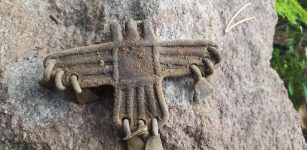 Unique Ancient Three-Headed Eagle Pendant Discovered In Finland: A Symbol Of Three Different Human Souls
Ancient Symbols | May 6, 2016
Unique Ancient Three-Headed Eagle Pendant Discovered In Finland: A Symbol Of Three Different Human Souls
Ancient Symbols | May 6, 2016 -
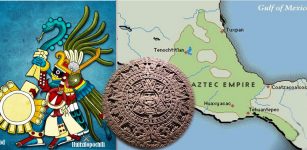 Why The Aztecs Called Themselves ‘Mexica’
Ancient History Facts | Jan 13, 2018
Why The Aztecs Called Themselves ‘Mexica’
Ancient History Facts | Jan 13, 2018 -
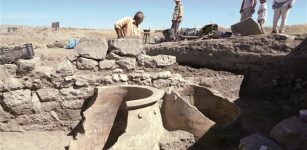 Huge Jars Unearthed In Kultepe, Turkey
Archaeology | Sep 27, 2015
Huge Jars Unearthed In Kultepe, Turkey
Archaeology | Sep 27, 2015 -
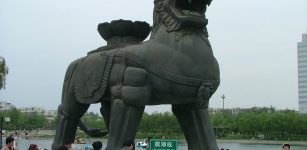 Incredible Ancient Metallurgical Wonders That Defy Explanation And Pose A Real Mystery Even Today
Civilizations | Apr 21, 2014
Incredible Ancient Metallurgical Wonders That Defy Explanation And Pose A Real Mystery Even Today
Civilizations | Apr 21, 2014 -
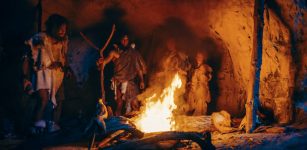 How Human Ancestors Used Fire – New Methods Give Answers
Archaeology | Nov 2, 2022
How Human Ancestors Used Fire – New Methods Give Answers
Archaeology | Nov 2, 2022 -
 Weird Archaeological Discovery In Ancient Scottish Cave – A Neolithic And Celtic Mystery
Featured Stories | May 30, 2024
Weird Archaeological Discovery In Ancient Scottish Cave – A Neolithic And Celtic Mystery
Featured Stories | May 30, 2024 -
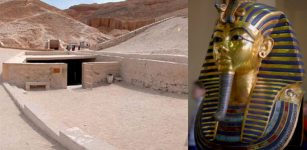 Radar Discovery Of Unknown Space Beyond Tutankhamun’s Burial Chamber May Lead To Queen Nefertiti’s Tomb
Archaeology | Feb 21, 2020
Radar Discovery Of Unknown Space Beyond Tutankhamun’s Burial Chamber May Lead To Queen Nefertiti’s Tomb
Archaeology | Feb 21, 2020 -
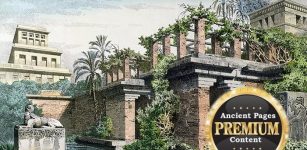 Riddle Of The Hanging Gardens Of Babylon – Highly Advanced Technologies – Part 2
Ancient Mysteries | Jun 11, 2019
Riddle Of The Hanging Gardens Of Babylon – Highly Advanced Technologies – Part 2
Ancient Mysteries | Jun 11, 2019 -
 Mysterious Biblical Celestial City And Its Connection To The North Star – Nonhuman Hands – Part 1
Ancient Mysteries | Feb 22, 2021
Mysterious Biblical Celestial City And Its Connection To The North Star – Nonhuman Hands – Part 1
Ancient Mysteries | Feb 22, 2021 -
 10 Christian Symbols Explained
Ancient Symbols | Jul 28, 2018
10 Christian Symbols Explained
Ancient Symbols | Jul 28, 2018 -
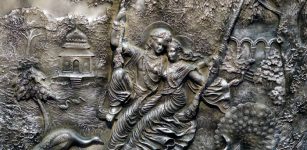 Mysterious Forest Of Treasure – Why Is It Forbidden To Stay In Nidhivan After Sunset?
Featured Stories | Nov 24, 2021
Mysterious Forest Of Treasure – Why Is It Forbidden To Stay In Nidhivan After Sunset?
Featured Stories | Nov 24, 2021 -
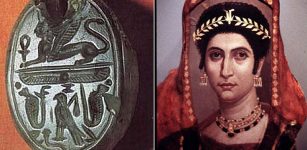 Infamous Queen Jezebel And Her Ancient Seal
Featured Stories | Feb 13, 2016
Infamous Queen Jezebel And Her Ancient Seal
Featured Stories | Feb 13, 2016 -
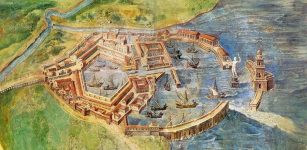 Portus: History Of Ancient Roman Hub Of Commerce – Reconstructed With New Methods
Archaeology | Jul 17, 2019
Portus: History Of Ancient Roman Hub Of Commerce – Reconstructed With New Methods
Archaeology | Jul 17, 2019 -
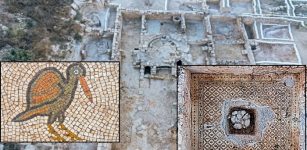 1,500-Year-Old “Church of the Glorious Martyr” With Beautiful Mosaic Unearthed Near Jerusalem
Archaeology | Oct 24, 2019
1,500-Year-Old “Church of the Glorious Martyr” With Beautiful Mosaic Unearthed Near Jerusalem
Archaeology | Oct 24, 2019 -
 North America’s New Snake Species Deepen Our Understanding Of Reptile Social Behavior And Development
Evolution | Aug 2, 2024
North America’s New Snake Species Deepen Our Understanding Of Reptile Social Behavior And Development
Evolution | Aug 2, 2024

